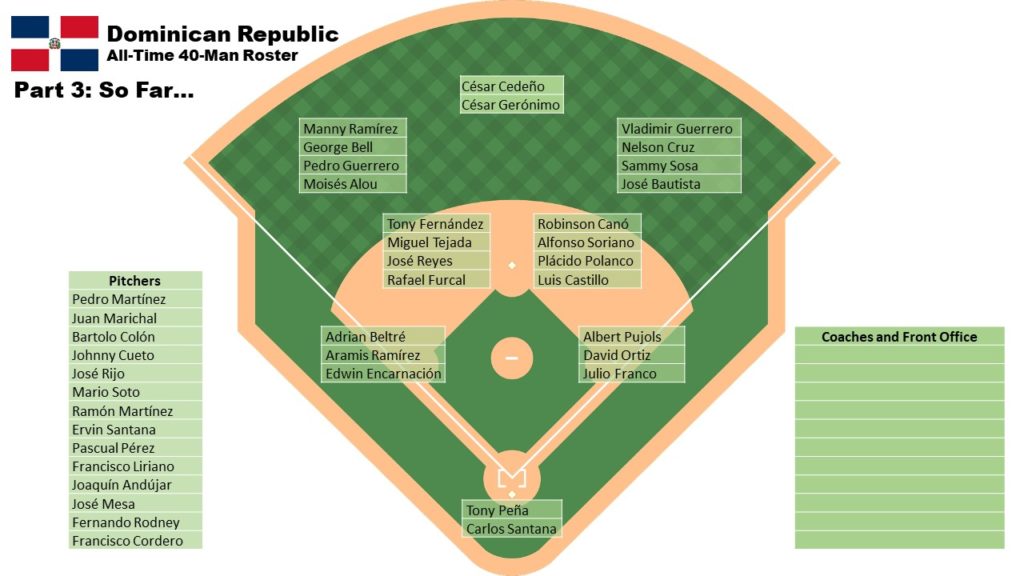
Throughout the history of Major League Baseball (MLB) there have been countless iconic international players. Ichiro Suzuki from Japan, Roberto Clemente from Puerto Rico, and Miguel Cabrera from Venezuela, just to name a few. Featuring players from across the globe, MLB teams are a plethora of cultures, skillsets, and approaches to the game.
MLB is a truly global league, but no foreign country seems to play a bigger role than the Dominican Republic. In 2020 alone, there were 110 Dominican MLB players. Some, like Juan Soto, Fernando Tatis, Jr., and Vladimir Guerrero, Jr. have solidified themselves as the game’s brightest young stars, garnering attention for their fantastic play and passion for the game.
In brainstorming how to feature the greatest Dominican ballplayers, we first tried to come up with the all-time starting nine, but that was far too difficult to narrow down. Instead, we tried to come up with a 25-man roster, but even that couldn’t do the topic justice. As a result, we created a 40-man roster, complete with a coaching staff and front office, and “Tomorrow’s Team,” featuring the players, coaches, and front office members whose stories are not yet completely told. In this five-part series, we’ll cover the best Dominican players to ever put on the uniform, divided into five categories: infielders and catchers, outfielders, pitchers, coaching staff and front office, and “Tomorrow’s Team.”
(For this list, we decided to limit our selection to the players who spent a majority of their formative years in the D.R. As a result, players of Dominican heritage that were raised in the U.S., like Alex Rodriguez and Manny Machado, will be left off this list.)
New to the list? Be sure to check out the first two parts: infielders and outfielders.
Couldn’t miss this one, could you? Don’t blame you. Check out this amazing pitching staff:
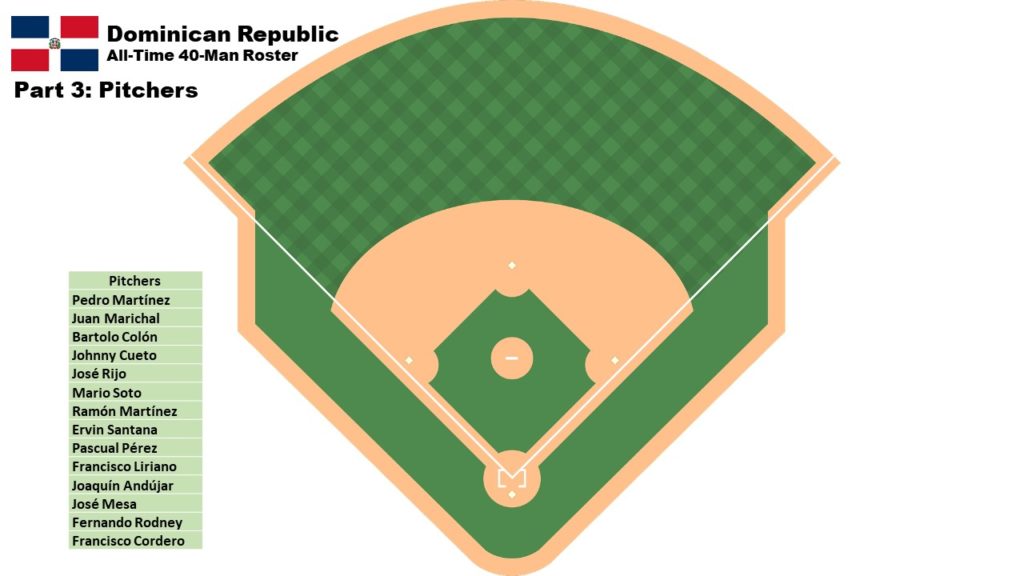
Pedro Martínez
From Manoguayabo

You can’t write the history of the Boston Red Sox without their two Dominican legends – “Big Papi” and “Pedro” – no last name needed. Martínez, whose retired number 45 hangs in the rafters at Fenway Park, posted a 117-37 record while with the team– the highest winning percentage any pitcher has had with any MLB team.
Martínez began his MLB career with the Los Angeles Dodgers, but first showed true signs of greatness while with the Montreal Expos, winning his first of three Cy Young Awards in 1997 (he remains the only Expo to win the honor) and being named an All-Star in 1996 and 1997. After being traded to the Red Sox, he became one of the most electric pitchers in the history of the game, winning the pitching Triple Crown in 1999 (leading the league in wins, strikeouts, and ERA), winning Cy Youngs in 1999 and 2000, and leading Boston to four playoff appearances, including their cathartic, curse-breaking World Series championship in 2004.
There’s no satisfactory way to fully explain how dominant Martínez was on the mound, but perhaps his final career totals will highlight it: he finished with 3,154 strikeouts, leading the American League three times (1999, 2000, 2002) and with a career ERA of 2.93 over 18 seasons, leading MLB in the stat a whopping five times (1997, 1999, 2000, 2002, 2003). With fantastic control and an arsenal of nasty pitches, there was no scarier pitcher to face in the early 2000s than Pedro in front of the Boston faithful.
He is one of only three Dominican players to reach the Hall of Fame, and one of only two pitchers– the other of course, being…
Juan Marichal
Laguna Verde
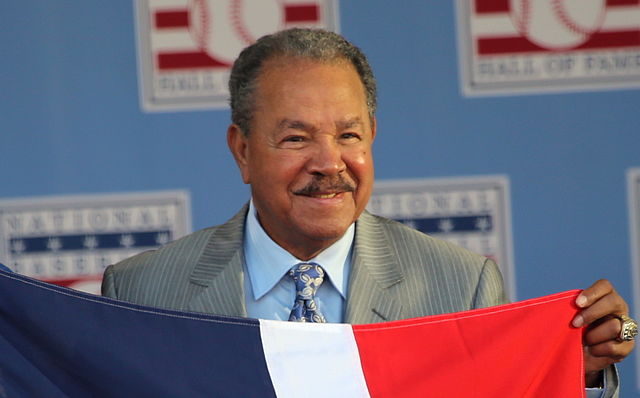
Marichal was a workhorse that dominated for thirteen seasons with the San Francisco Giants, and is remembered well for his high leg kick and aggressive pitching.
First introduced to Giants fans in 1960, he took his first start into the eighth inning with no hits; it wouldn’t be until 1963, however, that he would pitch a no-hitter. Marichal had several other memorable games, as he is also remembered well for his role in two critical Giants’ memories: “The Greatest Game Ever Pitched” and the “Roseboro Incident.”
The first involved him pitching 16 complete innings in a pitchers’ duel with the Milwaukee Braves’ Warren Spahn, winning the game 1-0 on a Wille Mays home run, while the latter involved Marichal whacking his bat over Dodgers’ catcher John Roseboro’s head, causing a benches-clearing brawl. The incident would follow Marichal for years on end, but Roseboro would later publicly forgive Marichal for the attac k- a move, some claim, that helped Marichal get into the Hall of Fame.
Marichal was one of the most consistent winners of the 1960s, notching more than 20 wins six times in the decade. He also made the All-Star game nine times, including eight consecutive appearances from 1962 to 1969 (the other coming in 1971), led MLB in wins twice (1963, 1968), and posted a league-leading 2.10 ERA in 1969. With a memorable career and one of the most consistent resumes, Marichal became the first Dominican player to ever be inducted in Cooperstown in 1983.
Bartolo Colón
Altamira

Nicknamed “Big Sexy” and beloved by several MLB fanbases, Colón was one of the most important pitchers of the 2000s and for the Dominican Republic, as he currently sits as the all-time wins leader for pitchers from the D.R.
First appearing for the Cleveland Indians in 1997, Colón quickly became a staple for their pitching staff, being named an All-Star in 1998 and winning 18 games in 1999. After a couple more solid seasons and then winning 20 games between the Indians and Expos in 2002, Colón would become a bonafide stud for the Los Angeles Angels, winning 18 games in 2004 and winning the Cy Young Award in 2005, winning 21 games with a 3.48 ERA. A torn rotator cuff in the playoffs, however, did not bode well for his career.
After bouncing around a few clubs, taking the 2010 season off to recover and even being suspended for 50 games for failing a P.E.D. test in 2012, Colón bounced back with the Oakland Athletics in 2013. No longer having the overpowering arsenal of pitches he once had, he reinvented himself as a master of pitching and wily veteran, using deception, movement, and pinpoint command of his fastball to compile 11 wins by the All-Star break, earning third All-Star nod.
Colón would turn the success into a new contract with the New York Mets, where he became a beloved fifth starter and reliable bullpen arm. Fans loved Colón for his larger-than-life personality – and physique – and great effort for the team, with his most memorable moment coming in 2016: his first Major League home run at the age of 42.
With 247 wins and four All-Star appearances (1998, 2005, 2013, 2016) under his XL belt, there’s no denying Colon’s impact on the game– nor his sneaky athleticism!
Johnny Cueto
San Pedro de Macorís

One of the most fascinating pitchers to watch in the modern era, Cueto mixes his great stuff and control with a unique form of deception that could ultimately combine to etch his place on the DR’s Mount Rushmore of pitchers. Known for his delayed delivery and his “shimmy” while pitching, Cueto is one of the trickiest hurlers in the game today – for proof, check out this at-bat, in which he uses six different windups in six pitches and busts out the “triple shimmy” to get the K!
First appearing for the Cincinnati Reds in 2008, Cueto became a critical part of the pitching staff and showed flashes of dominance in several arenas, including a fantastic range of control that saw him issue very few walks. Cueto would emerge as the team’s ace in 2011, when his 2.78 ERA would have officially led the league if he had just pitched six more innings. He followed up that year with a dominant full season in 2012, winning 19 games in 33 starts and being named a Cy Young finalist.
Following an injury-shortened 2013 season that was made worse by infamously being rattled and dropping the ball on the mound before dishing up a home run during the Wild Card Game, Cueto demonstrated impressive resilience with his best season yet in 2014, finishing second in NL Cy Young voting with 20 wins and 242 strikeouts. With the Reds aiming to rebuild, however, Cueto was traded to the Kansas City Royals in 2015 as a deadline acquisition, where he became a reliable playoff starter, winning a critical Game 5 in the ALDS and pitching a complete win in Game 2 of the World Series.
Cueto signed a six-year contract with the San Francisco Giants in 2016. He has shown flashes of his brilliance in San Francisco but has failed to stay healthy for most of the duration of the deal. Let’s hope he returns to form soon.
Mario Soto
Baní
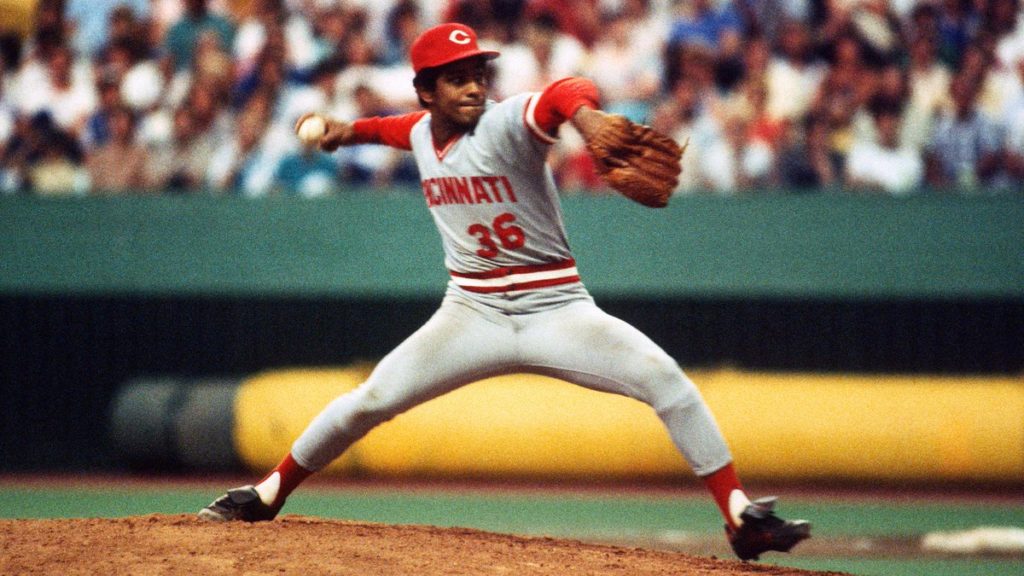
A three-time All-Star and a member of the Cincinnati Reds Hall of Fame, Soto was a legendary two-pitch hurler who could blow it by anyone and confuse them with his curve.
Soto, who struck out 1,063 batters from 1980 to 1985, was an aboslute workhorse and at times nearly untouchable. Of note are his 18 complete games in 1983, which– along with his 17 wins, 242 Ks, and 2.70 ERA– certainly put him in the Cy Young conversation. In fact, if you ask us, he was robbed – he shouldn’t have finished second in voting to John Denny (here are the stats – you can decide for yourself). He followed the performance with a memorable 1984 campaign, which saw another 13 complete games, 18 wins, and his third consecutive All-Star game. Unfortunately for Soto, the Reds were never able to field a truly competitive team behind him.
After retiring from playing, Soto would later become an important pitching coach for the Reds, helping develop talents such as fellow Dominicans Edinson Volquez and the aforementioned Johnny Cueto. A true dedicated teamsman, Soto deserves recognition for his work on the mound and in the dugout.
Ramón Martínez
Santo Domingo
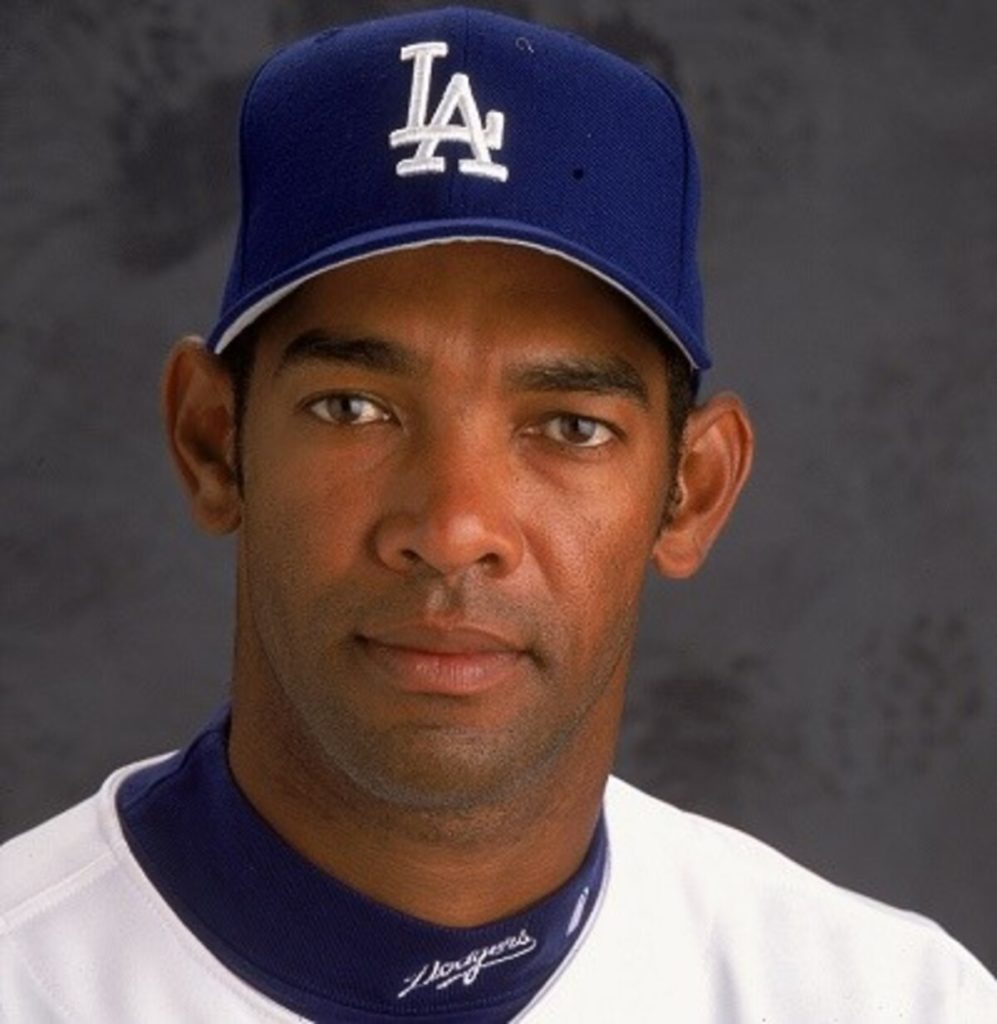
A five-time Opening Day starter and steady member of the Los Angeles Dodgers’ rotation, Martínez was a highly touted prospect and humble brother, stating on numerous occasions that his younger brother – the aforementioned Pedro, who was a Dodgers prospect when Ramón reached the big leagues – was a better pitcher than himself. If only the Dodgers listened and hung onto Pedro!
Even before his MLB debut, Martínez was turning heads at Dodger Stadium, pitching for the Dominican National Team in the 1984 Olympics at just 16 years old. After making his MLB debut in 1988, he broke out in 1990 with his lone All-Star appearance, a dominating showing from the 20-year old phenom: 20 wins, a 2.94 ERA, an MLB-leading 12 complete games, and 223 strikeouts (2nd in NL)- good enough for finishing second in NL Cy Young voting.
Becoming a steady member of the Dodgers’ rotation for the better part of a decade, Martínez had several memorable moments in Los Angeles, but none as memorable as his 1995 no-hitter over the Florida Marlins at Dodger Stadium, which was an 8th-inning walk away from being a perfect game: 28 batters faced, 27 retired.
After teaming up with his brother Pedro in Boston in 1999 and 2000, Martínez finished his career with a respectable 135 wins, 3.67 career ERA and 1,427 strikeouts.
Not bad for the “lesser-talented” brother.
Ervin Santana
San Cristóbal
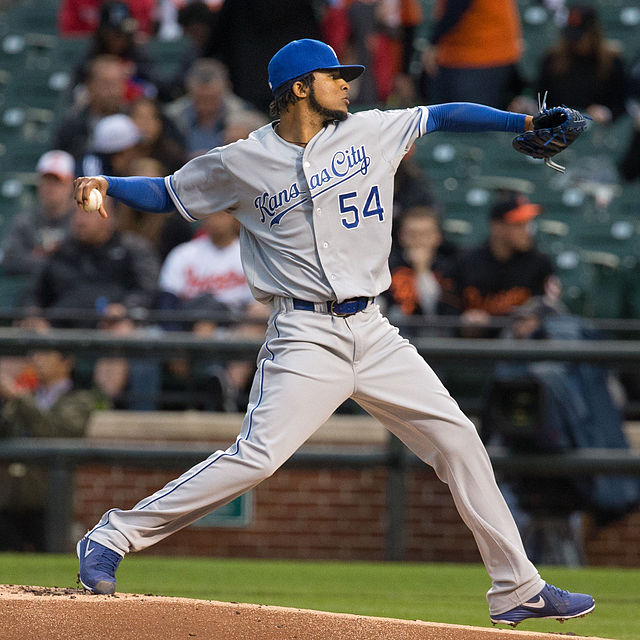
With a no-hitter and two All-Star appearances to his name, Santana has been a fixture of MLB pitching staffs for 16 seasons, and is currently looking to continue his career with the Kansas City Royals.
Signed at age 17 out out of the Dominican Republic, Santana emerged as a hot prospect in the Angels’ organization as he meticulously worked his way up the organization ladder. At age 22 in 2005, he got his shot in the rotation posting a solid 12-8 record with 99 strikeouts. His most memorable moment of his rookie season, however, came in his dramatic relief of fellow all-time Dominican Bartolo Colon in the deciding game five of the 2005 ALDS against the New York Yankees. Colon left the game after the first inning due to an injury, and Santana calmly pitched 5.1 innings in relief, earning the win and a ticket to the ALCS.
Santana would continue to put in fantastic work for the Angels, being named an All-Star in 2008 following a 5-0 start to the season, and would pitch the club’s first no-hitter since 1990 in 2011 against the Cleveland Indians. After departing from the club in 2012, Santana saw stints with the Royals and Atlanta Braves before finding a new home with the Minnesota Twins, where he won 16 games in 2017, including three complete game shutouts, and was named an All-Star for the third time in his career.
An efficient pitcher who can always keep hitters off-balance, let’s hope Santana finds one more period of success with the Royals.
Pascual Pérez
San Cristóbal
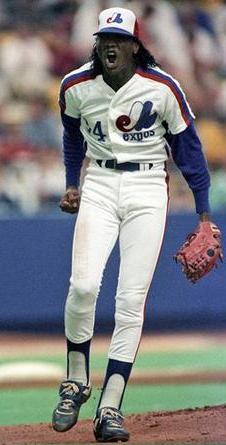
One of the more memorable characters in MLB history, there are simply too many moments to remember Pérez for. Among them were his memorable absence from the start of a game after getting lost on Atlanta highways after getting his driver’s license, his peek between the legs at runners on first base, and his role in the 1984 Braves-Padres brawl, featuring beanballs aplenty and the ejection of 19 players.
Of course, beyond the flamboyant character and Jheri curl hairstyle was a pretty darn good pitcher. Pérez, who was named an All-Star in 1983, had several memorable years for the Atlanta Braves and Montreal Expos, winning a combined 29 games for Atlanta in 1983 and 1984 and a dominant 7-0 run over 10 games for Montreal in the 1987 season. Pérez also threw a five-inning no-hitter in 1988, but the game was later removed from the record books due to a stipulation that “official” no-hitters must be nine innings or greater.
Pérez also found ways to be unique on the mound, often firing a finger pistol following a strikeout and using his own version of the parabolic Eephus pitch (which was called the “Pascual pitch”) to confuse batters. Following a strikeout to end the inning, Pérez, hopped up on the excitement, would often sprint to the dugout, showing a true energy and love for the game.
A fun-loving pitcher who embodied the eighties and showed Canadian fans some Dominican flare. Baseball was more fun with Pascual!
Francisco Liriano
San Cristóbal
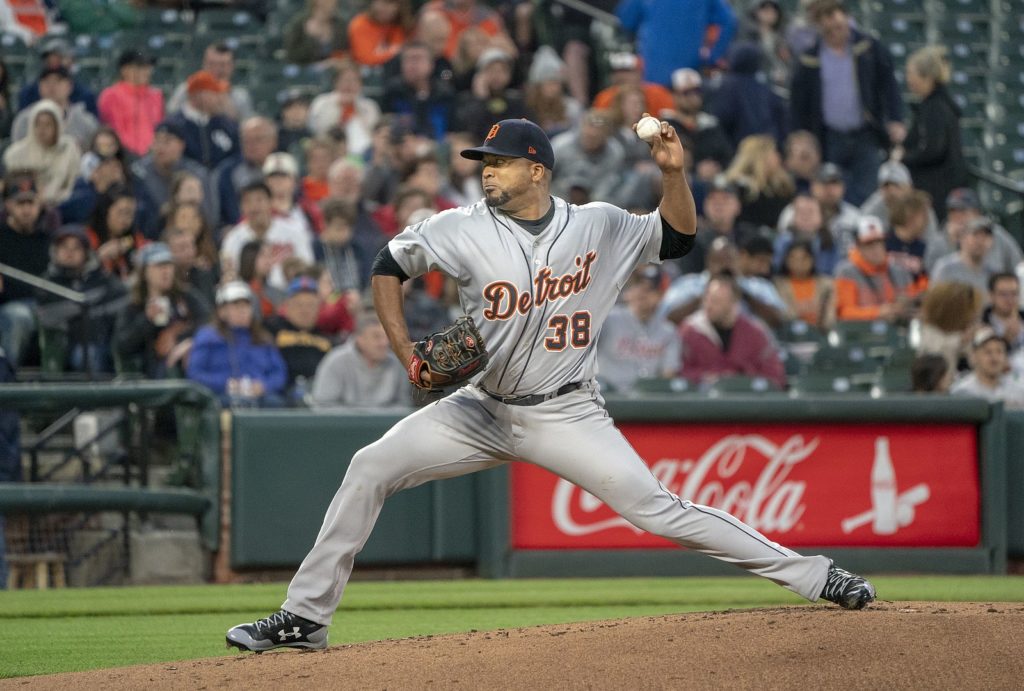
Being a two-time Comeback Player of the Year is enough to earn respect. Being a two-time Comeback Player of the Year, a World Series champion, All-Star, and pitcher of a no-hitter? That’s only been accomplished by one man: Francisco Liriano.
First established as a hot prospect for the San Francisco Giants and Minnesota Twins, Liriano came flying out of the gate in his first MLB season in 2006, with a 12-3 record at the break and his first All-Star appearance. He was getting Cy Young and Rookie of the Year momentum, but a long stint on the disabled list nulled those chances, and he would later have Tommy John surgery – it would be the first of many obstacles Liriano would have to overcome to return to the majors.
Return he did, however – in 2010, he became an important member of the Twins’ rotation, and struck out 201 batters – good for fifth in the American League – and a 14-10 record, earning him his first Comeback Player of the Year Award. Dealing with shoulder pain in 2011 and 2012, he once again returned to form in 2013 for the Pittsburgh Pirates, becoming the ace of the upstart squad with 16 wins, and winning their first playoff game in 21 years, earning his second CPOY award.
Liriano would later go on to win a World Series title in 2017 as a member of the Houston Astros. For his memorable perseverance through adversity and his stellar performance when healthy, he may not earn Hall of Fame votes, but he definitely found respect across the league.
Joaquín Andújar
San Pedro de Macorís
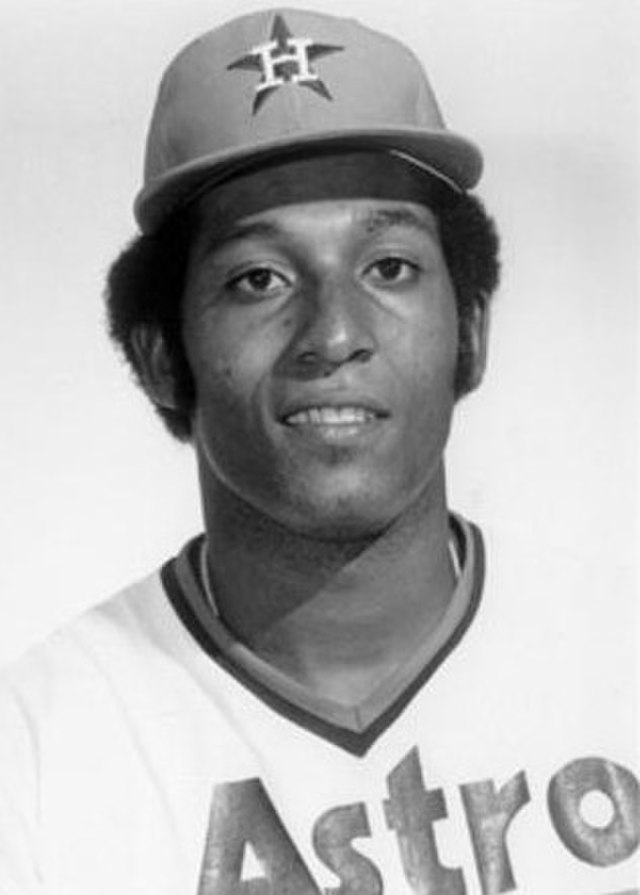
Often splitting time between the bullpen and the starting rotation, and a Gold Glove winner on the mount, Andújar was an invaluable member of multiple pitching staffs.
First appearing for the Houston Astros in 1976 out of the bullpen, Andújar began to jump between the rotation and the relief corps, showing flashes of brilliance in both. In the rotation, he had the stuff and endurance to go all nine, pitching back-to-back 1-0 complete game victories in 1976, and four consecutive complete games in 1978. After two All-Star seasons for Houston (1977, 79) he was traded to the St Louis Cardinals in 1982, which became his most memorable season.
A key acquisition for the Cardinals down the stretch, Andújar became a critical member of St. Louis’s 1982 championship run, winning his last seven decisions with a 1.64 ERA, and starting two games for the Cardinals in their World Series victory, including the clinching Game 7.
Not satisfied, Andújar would have his best season yet in 1984, winning an MLB-leading 20 games, posting a 3.34 ERA, and winning the NL Gold Glove at his position. Andújar would also factor into the Cardinals’ 1985 run to the World Series, which they memorably lost to the Kansas City Royals in a controversial seven games. Andújar was ejected in the seventh game arguing balls and strikes, and subsequently destroyed the visitors’ washroom, a testament to his competitive nature and passion for the team.
José Rijo
San Cristóbal
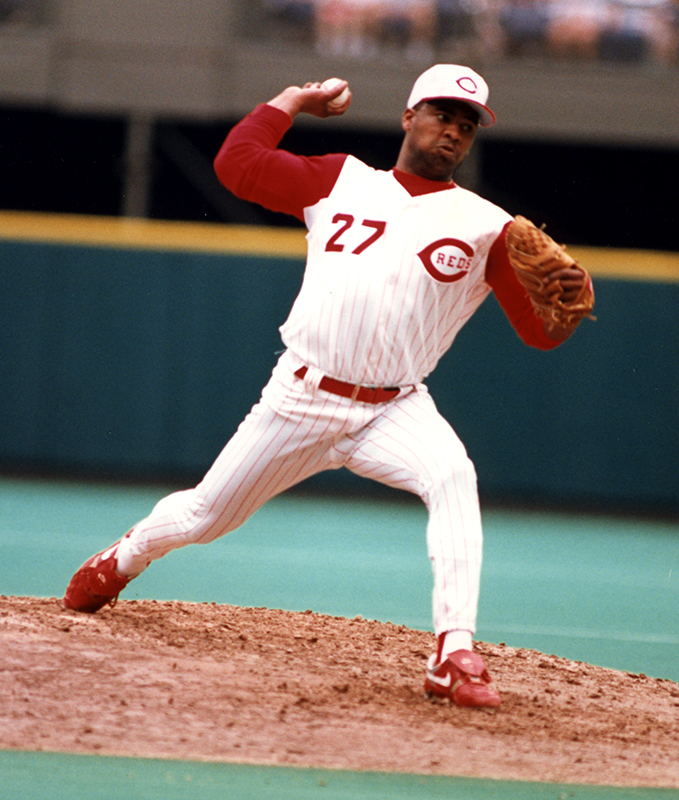
A member of the Cincinnati Reds Hall of Fame and a critical member of their 1990 World Series team, Rijo was an unbelievable hurler at his peak- which is why the amount of injuries that plagued him through his career was such a bummer.
Rijo first began his career with the New York Yankees, but was soon traded to the Oakland Athletics after his rookie season did not pan out well, and after an unremarkable 17 wins over three seasons, the A’s traded him to Cincinnati after the 1987 season. With the Reds, however, he suddenly became a bonafide ace, and helped carry the Reds back to relevance for the first time since the Big Red Machine of the 1970s.
He finished six consecutive seasons with an ERA under 3.00 from 1988 to 1993, but his best season came in 1990, when he earned MVP votes for winning 14 games, tallying seven complete games, and helping the Reds reach the postseason for the first time in 11 years. More importantly, Rijo went 3-0 in his only postseason, including two wins in the World Series in which he posted a 0.59 ERA and 15 strikeouts. A clutch pitching performance matched by few others, Rijo was named World Series MVP as the Reds would go on to sweep the Athletics behind their star pitcher.
Rijo posted an MLB-best .714 win-loss percentage in 1991 with a 15-6 record, and would be named an All-Star in 1994 – his lone appearance in the midsummer classic. Injuries, however, caught up to him, and he would be out of the league for five years. He tried to return in 2001, and saw moderate success, but was remembered better for his one fantastic postseason.
With a string of dominant seasons and World Series heroics, Rijo at is peak was one of the best pitchers in baseball.
José Mesa
Pueblo Viejo

One of the most dominant closers in MLB history with 321 saves, Mesa was a critical member of the 1990s Indians that won two American League pennants, and was a formidable foe in the late innings.
After beginning his career as a starting pitcher for the Baltimore Orioles, Mesa would make the transition to the bullpen in 1994, and became one of the most feared pitchers the following season. En route to the Tribe’s first pennant win in 41 years, Mesa appeared in 62 games in 1995, saving a then-MLB record 46 games in 48 appearances. His ERA was a miniscule 1.13. Despite being a bullpen arm, Mesa was becoming a star, and finished second in AL Cy Young voting and fourth in MVP voting.
After being named an All-Star for the second consecutive year in 1996, Mesa would return to the World Series in 1997, but blow the deciding Game 7 save to keep Cleveland’s World Series drought going; he would never return to form after that game, and bounced around with the San Francisco Giants and Seattle Mariners before finding a home with the Philadelphia Phillies, where he saved 112 games- good for second in franchise history.
With one historically dominant season as a closer and 19 years of dedicated bullpen work, Mesa is absolutely one of the most notable relievers of the modern era. None of us, at least, would ever want to stare him down in the ninth.
Fernando Rodney
Samaná
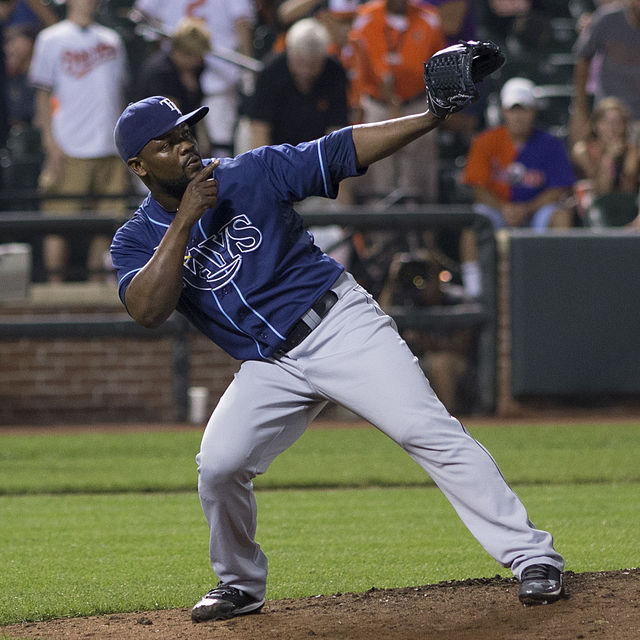
With 327 saves, a 3.80 career ERA, and 17 MLB seasons on his resume, it would be impossible for us to leave Rodney off, as the right-hander dealt with adversity to come back from injury and become one of the most storied relievers in both Dominican and MLB history.
Beginning his career with the Detroit Tigers in 2002, Rodney immediately dealt with injuries to his shoulder and subsequent mediocrity early on, dwelling in mop-up roles in the bullpen, and later as an effective setup man for the Tigers’ 2006 American League pennant team. Perennially frustrated with a lack of appearances and save opportunities, Rodney bounced around from Detroit to Anaheim, before reaching the Tampa Bay Rays in 2012.
There, Rodney would begin the greatest stretch of his career, earning his first All-Star appearance in 2012 and converting 48 saves, posting a dominant 0.60 ERA – one of the lowest in MLB history. For his efforts, Rodney would earn Comeback Player of the Year and Delivery Man of the Year. He carried that momentum into the 2013 World Baseball Classic the following Spring, anchoring the Dominican Republic bullpen on their dominant run to the WBC title. He not only closed out the final game – he also inspired the team’s rallying cry of “plátano power.”
Following that epic 12-month run, a fatigued Rodney would return to earth in 2013 before returning to his stellar form in 2014 with the Seattle Mariners, when he earned an All-Star nod and led the American League in saves.
He was an All-Star again in 2016 before bouncing around for a few more seasons. In his final MLB season with the Washington Nationals, Rodney put a (crooked) cap on his career, contributing to the team’s 2019 World Series victory over the Houston Astros. Now playing in the Mexican League, Rodney continues to contribute to the game with style and skill incarnate- a prototype of the modern closer.
Francisco Cordero
Santo Domingo
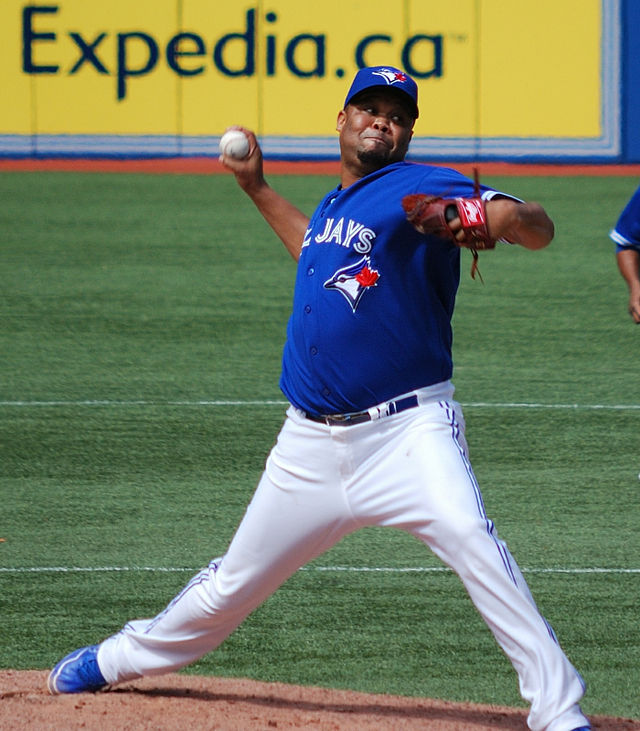
The all-time leader for Dominican pitchers in saves with 329, Cordero was a three-time All-Star whose dominance over thirteen MLB seasons is underappreciated by most fans.
He debuted for the Texas Rangers in 2000, but Cordero struggled with injuries in his early career. However, he showed hints of becoming a fantastic potential closer, saving 10 games in 2002 with a 1.79 ERA. Finally earning the chance to be the full-time closer in 2004, Cordero did not disappoint, saving 49 games, posting a 2.13 ERA, and earning his first All-Star nod. The following season would be more of the same, as he saved 37 games and posted a 3.39 ERA.
Following a trade to the Milwaukee Brewers, Cordero continued to be dominant in relief, recording 44 saves in 2007 – second in the National League, and good for his second All-Star nod. In the following offseason, Cordero signed a 4-year, $64 million contract- at the time, the richest ever offered to a relief pitcher. He would not disappoint, saving 39 games in 2009, good for his third and final All-Star nod; 40 in 2010, while helping the Reds make the playoffs for the first time since 1995; and 37 in 2011.
While he would taper off in the following seasons, there’s no doubt that Cordero was one of the more consistent and dominant closers during his prime. With a fantastic fastball and slider, opposing offenses would hate to see him emerging from the bullpen.
Check back here tomorrow for Part 4: Coaches and Front Office!
















